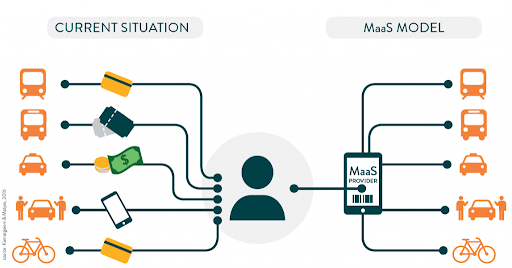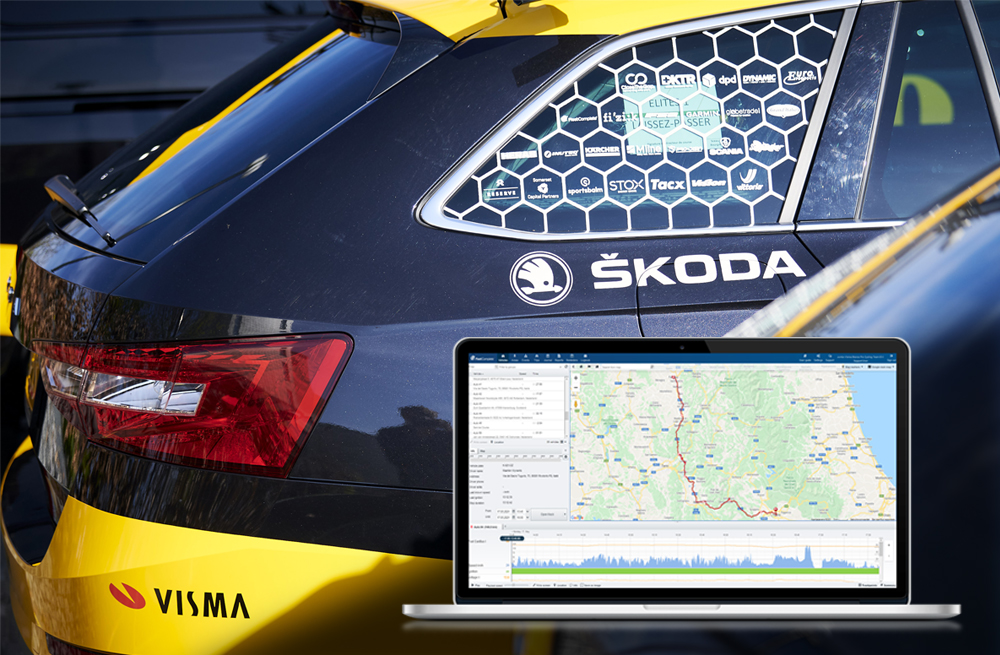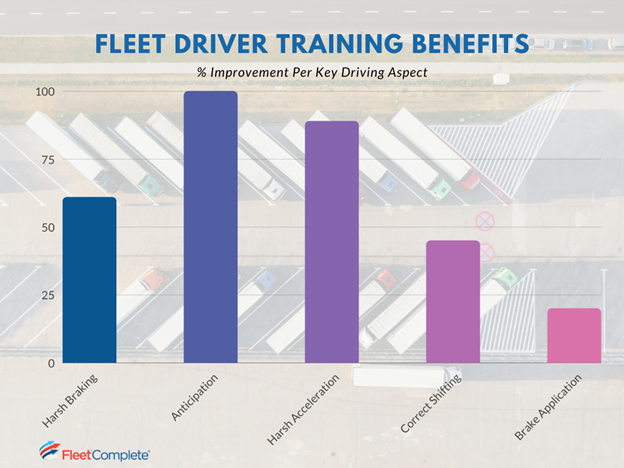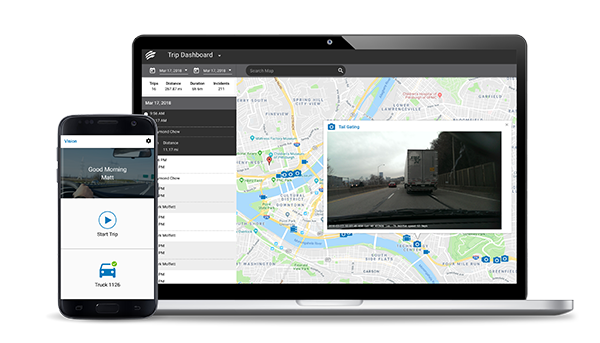There’s more to commercial driver safety than sticking to the speed limit and taking rest breaks. The safety of your drivers affects not only their own health and wellbeing, but the safety of other motorists too.
In 2023 alone, there were over 168,000 crashes involving large vehicles in the US, with 4,999 trucks involved in fatal crashes that led to 4,970 deaths. By prioritizing driver safety, you can keep your drivers safe and reduce the financial implications of road accidents, such as rising insurance premiums and claim payouts.
In this article, we’ll reveal some key safety tips for commercial drivers, to improve your driver safety training and the protection of your fleet.
Why is commercial driver safety important?
Truck driving comes with a unique set of challenges, such as dealing with adverse weather conditions and driving long distances with unpredictable traffic. Commercial drivers operate large vehicles, which take longer to slow down and stop than smaller vehicles, making accidents more severe. Their size also increases blind spots, making safety a top priority. Ensuring the safety of your fleet protects not only your drivers’ lives, but your business’ bottom line and reputation too.
Here are just some of the key reasons why fleet safety should be a top priority:
- Protecting lives: Prioritizing truck driver safety reduces road accidents and injuries, safeguarding drivers and other road users. Commercial vehicles are large and extremely heavy, meaning accidents could significantly harm pedestrians, cyclists and other vehicles.
- Financial impact: Accidents can cause significant damage to your vehicles, requiring repairs or replacements. Depending on the severity of the accident, you may need to pay out for medical expenses and legal fees, and your insurance premium may increase.
- Legal compliance: Driving safely ensures you adhere to compliance regulations, such as hours of service (HOS) rules and roadside inspections. Powerfleet’s (formerly Fleet Complete) compliance solutions can help you optimize your fleet’s compliance needs for safer and smoother fleet management.
- Environmental impact: Prioritizing safe driving, such as adhering to speed limits and practicing defensive driving techniques, can improve fuel efficiency and reduce emissions, allowing your fleet to drive more sustainably.
Safe driving tips for commercial vehicles
Here’s our list of top safety tips that your commercial drivers should practice to prevent accidents and adhere to legal regulations.
1. Avoid distractions and cell phone use
Anything that distracts your drivers from the road can be dangerous. Sending a text or reading a message can always wait until they’re no longer behind the steering wheel, or are pulled over to a safe stopping place. Make sure your drivers avoid using cell phones, eating or engaging in any activities that encourage distracted driving. If they need to make a call, make sure they pull over safely or use hands-free devices only when absolutely necessary.
2. Practice defensive driving techniques
Defensive driving means being constantly aware of risks and changing road conditions. Your drivers should anticipate potential danger, such as being prepared for sudden stops, lane changes or other potential hazards on the road.
Practicing defensive driving reduces the chance of a collision, helping you avoid expensive repairs and increases to insurance premiums. Drivers should try to plan escape routes to avoid collisions and aim to be proactive rather than reactive to reduce risks to themselves and other drivers.
3. Keep lane changes to a minimum
Your drivers should try to minimize lane changes where possible. Regularly changing lanes can increase the risk of an accident, especially if smaller vehicles are in the driver’s blind spot. Planning routes ahead of time can avoid unnecessary lane changes, but if a driver needs to change lanes they should always signal to alert other road users early. Drivers should try to maintain a constant speed to keep changing lanes to a minimum.
4. Carry out pre-trip inspections
Ensure thorough vehicle inspections are conducted before drivers start their trip. Checking the brakes, tires, mirrors, lights and fluid levels can ensure your commercial vehicles are roadworthy and safe to drive. Make sure any cargo is secured and balanced correctly, to prevent breakdowns. Make sure your drivers understand the importance of pre-trip inspections for fleet safety, and monitor the completion of these inspections.
Powerfleet’s (formerly Fleet Complete) Inspect can help drivers report any mechanical defects during pre and post-trip inspections. With Inspect, your drivers can submit any issues directly to mechanics, fleet managers and enforcement officers, to streamline the maintenance process.
5. Monitor your fleet with dash cams
Equip each commercial vehicle with a dash cam to improve both safety and driver accountability. A dash cam offers real-time visibility of your fleet’s trip, allowing you to monitor any unsafe driving behavior as well as external factors that could put your drivers and operations at risk. Powerfleet’s (formerly Fleet Complete) AI fleet dash cams can also detect driver fatigue and distracted driving through the Driver Monitoring System (DMS). With real-time vehicle date, AI vision
6. Encourage rest breaks
Considering fatigue is a leading cause of road accidents, breaks are vital for drivers to recharge, so they remain alert and focused on the road. According to the FMCSA, drivers must take a 30-minute break when they’ve driven for 8 cumulative hours without at least a 30-minute interruption.
Make sure drivers follow hours-of-service regulations and take breaks to refuel and hydrate themselves during long shifts. ELD compliance requires drivers to monitor their driving time and rest breaks, to promote safer driving and prevent driver fatigue. Make sure your fleet’s vehicles are fitted with reliable ELDs to automatically record and log data for you, so you can make sure your drivers are getting enough rest during long shifts.
7. Adapt to road conditions
Drivers should adjust their driving behavior in line with changing driving or road conditions. For example, if it’s wet, icy or foggy, they should reduce their speed and increase their following distance. The three-second rule helps drivers maintain a safe following distance, keeping a minimum of three seconds of space between the driver and the vehicle in front, to avoid collisions. Remind drivers to be extra cautious when driving in adverse weather conditions and to pay extra attention to road signs, weather alerts and other drivers.
8. Use GPS fleet tracking
GPS fleet tracking gives you complete visibility of your drivers’ behavior in real time. You’ll be able to monitor their braking patterns and speed, and know exactly where each vehicle is at any given time. You can also use GPS data to identify hazardous routes, such as those with poor road conditions or heavy traffic, so drivers can take a more efficient route. In the event of an emergency, you’ll quickly be able to locate drivers to ensure they get the support they need as quickly as possible. GPS fleet tracking ensures not just efficiency, but improved safety too.
Revolutionize your commercial driver safety with Powerfleet (formerly Fleet Complete)
With Powerfleet’s (formerly Fleet Complete) fleet safety solution, you’ll have full visibility of your vehicles’ health and your truck drivers’ driving behavior, to improve your safety coaching and overall fleet safety. Find out more about our safety solutions or request a demo today to get started.
Manage your fleet with Fleet Complete
Running an efficient fleet is no easy task – why not alleviate some of the pressures with a reliable fleet management system? Fleet Complete gives you complete control of your business fleet operations, driver, and vehicle safety and compliance to increase operational efficiency and help you keep things running smoothly. Get in touch with our team today to get started.






































































